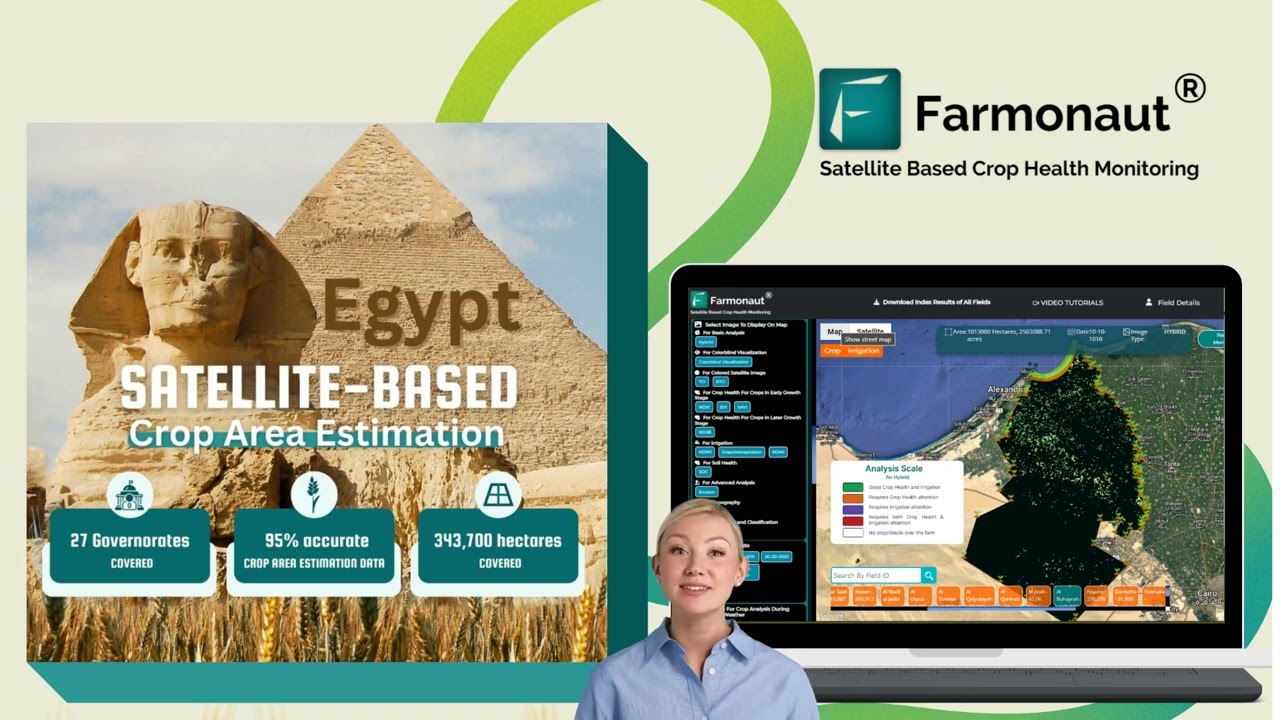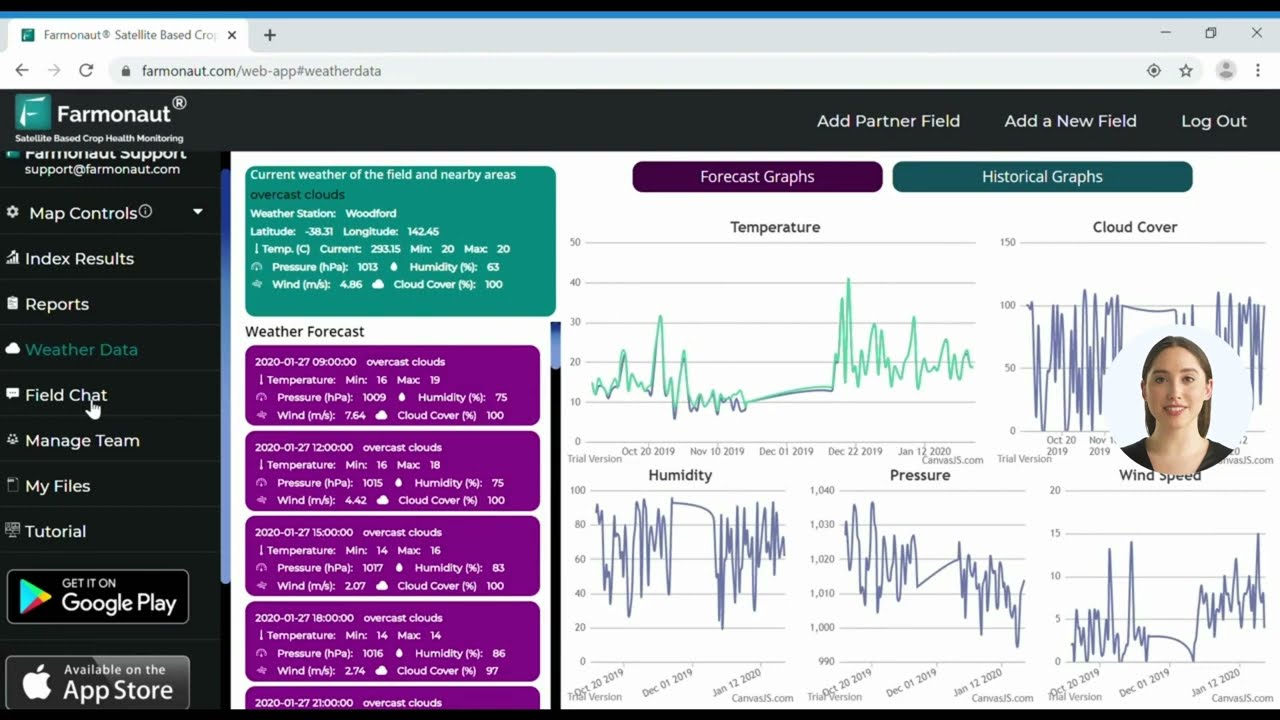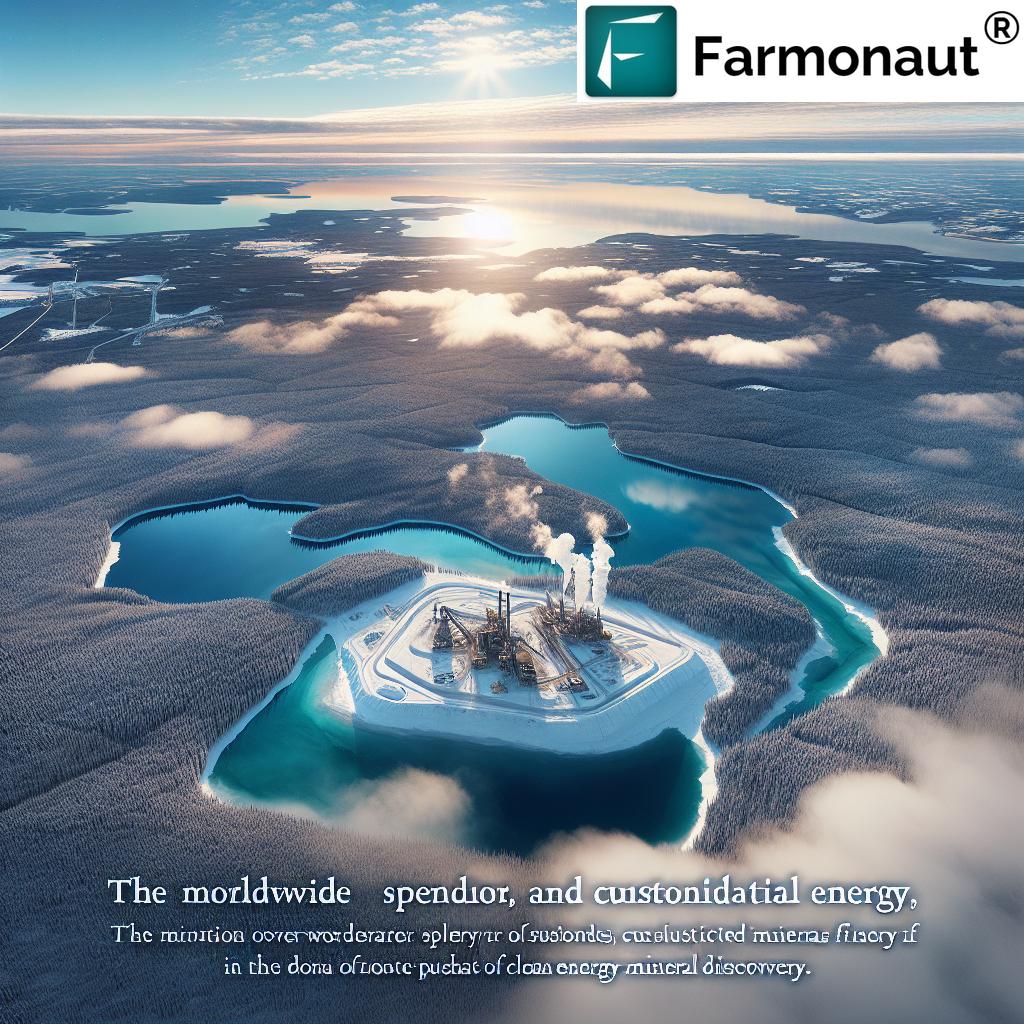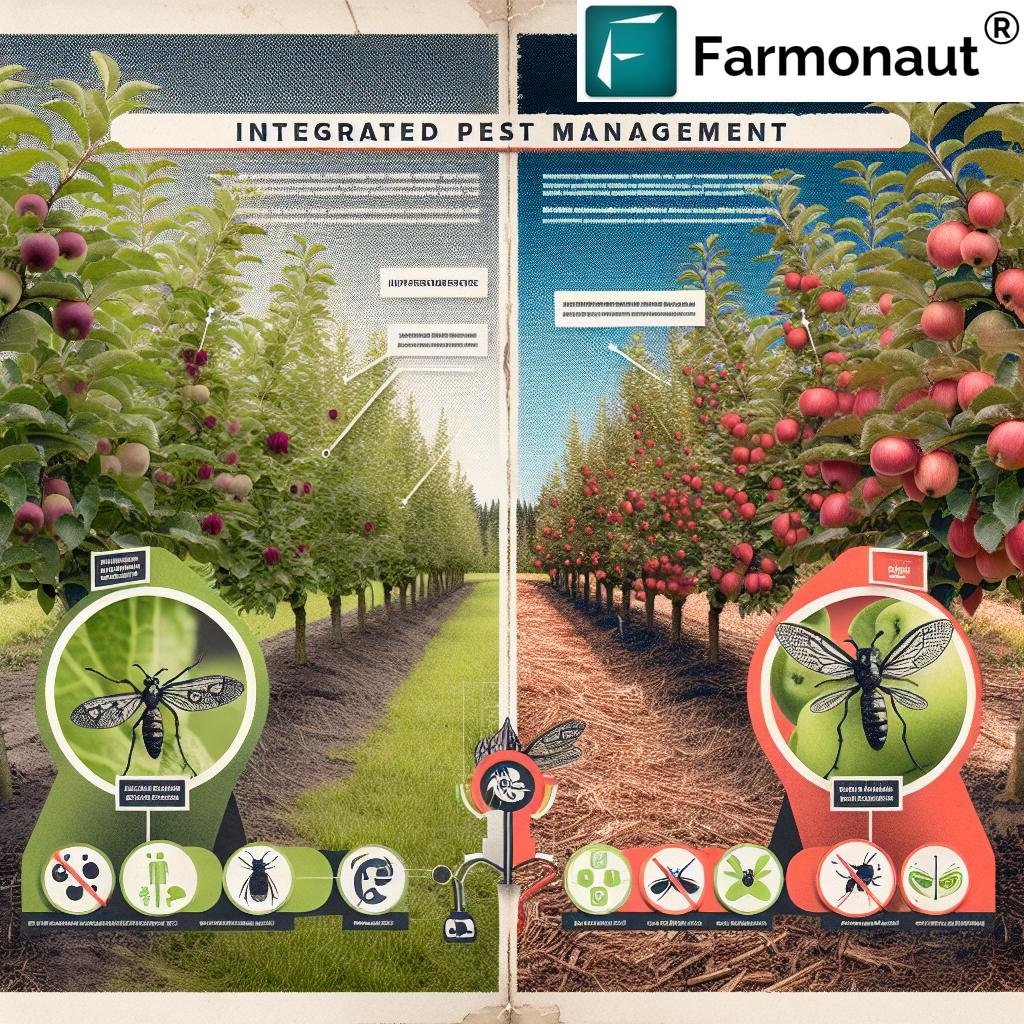Top 5 Soil & Sulphide Insights for Mineral Exploration in British Columbia
“Over 60% of new mineral discoveries in British Columbia involve advanced soil geochemistry analysis techniques.”
Table of Contents
- Overview and Summary
- Soil Geochemistry Analysis in British Columbia
- Massive Sulphide Mineralization Near Vancouver Properties
- Comparative Insights: Soil & Sulphide Geochemistry Table
- Modern Exploration Drilling Techniques & QA/QC
- Laboratory Analysis in Soil and Mineral Exploration
- GIS and Technology in Mineral Exploration
- Commodity Market, Finance, and Regulatory Environment in Canada
- Farmonaut: Precision Agriculture & Mapping Value Addition
- Frequently Asked Questions (FAQ)
- Conclusion
Overview and Summary
Mining and mineral exploration in British Columbia occupy a pivotal role on the world stage, with Vancouver recognized as a global hub for resource finance, real estate, and advanced exploration techniques. In April 2025, new and robust findings emerged as Ramp Metals Inc. announced the intersection of semi-massive and massive sulphide mineralization at the Rush target—a 1,100-metre conductive anomaly. This drilling and geochemical breakthrough has reignited interest in soil geochemistry analysis and massive sulphide discoveries across the province. Our analysis captures the top five soil and sulphide geochemistry insights highlighting the latest trends in mineral exploration British Columbia, offering practical, actionable knowledge for property owners, investors, and resource sector professionals. We emphasize laboratory analysis, drilling innovations, the impact of GIS technology, and the regulatory landscape that underpin the region’s thriving commodity market.
Soil Geochemistry Analysis in British Columbia
Understanding modern soil geochemistry analysis is fundamental for mineral exploration in British Columbia. We leverage detailed geochemical surveys to identify anomalous concentrations of elements such as copper, silver, and gold—a practice that has contributed to more than 60% of mineral discoveries in the province over the last decade.
- Soil Sampling Methods: Soil samples are systematically collected above geological anomalies and processed to determine trace mineral content using leading laboratory protocols. Recent exploration returned copper values up to 798.5 ppm and silver up to 21,152 ppb (21.15 g/t) in the Rush property analysis.
- Data Interpretation: Soil mineral content analysis relies on comparing data against local background values and known ore deposit models, a step forward facilitated by cross-referencing rock sample and drill assay results. Such precision in geochemistry enables us to target and rank new mineralized zones, maximizing land and capital efficiency on our Vancouver property exploration initiatives.
The greater Vancouver region, serving as the nexus for resource professionals, benefits immensely from the state-of-the-art analysis pipelines now standard in British Columbia’s exploration. These workflows combine satellite data, laboratory precision, and GIS-integration to produce actionable real estate and commodity intelligence.
Massive Sulphide Mineralization Near Vancouver Property Exploration
“Massive sulphide mineralization accounts for nearly 40% of recent exploration targets near Vancouver properties.”
Our recent drilling at the Rush and Ranger targets illustrates the value of recognizing massive sulphide mineralization in the pursuit of high-value commodities. All three Rush drill holes intersected significant zones of semi-massive to massive sulphides, visually confirmed by Thermo Scientific™ Niton™ XL5 Plus handheld XRF analyzer.
- Mineralization Details: Drill hole Rush-001 intersected disseminated sulphides from ~12.5m to 30m, semi-massive from 31.5m-33.25m, and a 3.2m section of massive sulphide from 61.50-64.69m. Subsequent holes showed similar results across discontinuous intervals, validating soil geochemistry predictions.
- Key Sulphide Minerals: The primary economic minerals at Rush include chalcopyrite (copper sulphide) and sphalerite (zinc sulphide), occurring in both stringer and massive forms, which are ideal for subsequent laboratory validation and gold/silver content assessment.
- Exploration Extension: Encouraged by these discoveries, we are now extending the drilling program to 19-20 holes, underlining the continuing promise of Vancouver property exploration driven by robust sulphide anomalies.
These finds mark the confluence of geoscience, property development, and advanced agricultural technology, positioning British Columbia as a leader in sustainable mineral resource development and finance.
Comparative Insights Table: Top 5 Soil & Sulphide Geochemistry Findings
| Location/ Property Name | Key Soil Geochemistry Indicator | Estimated Sulphide Concentration (%) | Mineralization Type | Notable Exploration Insight or Trend |
|---|---|---|---|---|
| Rush Target, NE-SW Conductor | Copper: 798.5ppm Silver: 21,152ppb |
Up to 35% in massive zones | Massive & Semi-massive Sulphides | 1100m conductive anomaly; chalcopyrite and sphalerite; multi-drill hole success |
| Ranger, Rottenstone SW | Gold: 73.55g/t over 7.5m Quartz Diorite host |
Trace to <1% (Hematite & Potassic altered) | Quartz Diorite sulfide veining | Potassic/hematite alteration—proximity to EM anomalies |
| Vancouver Peri-urban Properties | Zinc: 450ppm avg Copper: 200ppm |
Up to 10% (stringer forms) | Stringer Sulphides | Urban-exploration overlap; advanced geochemistry mapping |
| Southwest BC Interior | Lead: 125ppm Silver: 6g/t |
15-18% (localized pods) | Sphalerite-Galena rich pods | Discontinuous podiform massive sulphide; evolving property deals |
| Rottenstone Domain, Central BC | Gold: 1.2g/t (avg) Copper: 250ppm |
5-12% (disseminated to semi-massive) | Disseminated Sulphides | Large-scale, multi-hectare potential; strong geochemistry-drilling correlation |
Exploration Drilling Techniques & QA/QC in Mineral Exploration British Columbia
Advanced exploration drilling techniques are central to the effective discovery and assessment of mineralized zones, particularly in the structurally complex geology of British Columbia. Our latest campaign features NQ-sized core drilling, enabling precise laboratory analysis at depths ranging from 12.5m to 123m. Such methodologies, implemented with systematic quality assurance/quality control (QA/QC), ensure reliability in gold and silver drill sample results and commodity market reporting.
- Sample Preparation: Drill cores are analyzed by portable pXRF for preliminary screening, then carefully cut, bagged, and shipped for full laboratory analysis under controlled chain-of-custody protocols. Certified reference materials, blanks, and duplicates are inserted every 15 samples, aligning with best practices for gold and silver traceability.
- Laboratory Methods: Accredited labs, such as Bureau Veritas in Vancouver, employ multi-element ICP and fire assay analysis. This dual approach enables detection of trace sulphide minerals, gold, and silver with robust statistical accuracy vital for both property owners and regulators.
- Commodity Market Impact: Laboratory-backed results underpin confidence in exploration finance and property assessment, directly influencing real estate values and insurance risk modeling in Vancouver and across British Columbia.
By integrating stringent laboratory protocols with innovative drilling and geotechnology, we enhance the economic and environmental sustainability of the British Columbia mining landscape.
Laboratory Analysis: Ensuring Accuracy and Value in Soil & Mineral Sample Results
Mineral sample laboratory analysis serves as the backbone for resource validation, finance, insurance, and property exchange decisions. We utilize accredited, ISO 17025:2017 certified laboratories for all explorative samples, ensuring traceability from field to financial reporting.
- Soil & Core Analysis Pipeline: Each sample undergoes PRP70-250 prep (weigh, dry, crush, pulverize) and is then tested using the MA300 (multi-acid ICP-ES) and FA330 (fire assay with AAS finish) protocols. Gold values >10 ppm trigger automatic gravimetric reanalysis, guaranteeing accurate reporting for the commodity and real estate markets.
- Data Transparency: Laboratory data is provided alongside rigorous QA/QC documentation, supporting compliance with market and regulatory obligations, including commodity market regulations Canada.
- Traceability Solutions: Integrating traceability from field to lab—also a cornerstone of Farmonaut’s Traceability Solutions—bolsters transparency and consumer trust, especially in audits or finance and insurance underwriting for mining and agricultural ventures alike.
The ability to confidently report drill sample results not only supports property valuation and market exchange, but also plays a key role in environmental stewardship and agricultural sustainability strategies.
The Role of GIS in Mineral Exploration British Columbia
Geographic Information Systems (GIS) have become indispensable for modern mineral exploration British Columbia. By integrating geospatial data—such as geochemistry, drilling coordinates, property boundaries, and environmental overlays—GIS streamlines the analysis of large-scale property datasets and supports more effective exploration.
- Multilayer Mapping: We leverage GIS to overlay soil geochemistry analysis with satellite imagery, topography, and known mineralization systems, revealing anomalies and vectoring further drilling programs.
- Decision Support: GIS-powered dashboards enable exploration teams and property managers to evaluate and prioritize multiple targets, supporting informed finance and insurance negotiations.
- Ecosystem Applications: Beyond minerals, GIS is also integral in farm, forestry, and real estate systems, offering broad utility for agricultural, irrigation, pest and disease management, and landscape-scale land use planning.
Such technological advancements echo the broader movement toward digital, transparent, and efficient resource sector management.
Learn more about Farmonaut’s satellite-GIS solutions for agricultural, crop plantation, and forestry advisory here.
Commodity Market, Finance, and Regulatory Environment in Canada
Robust market structures and regulatory transparency are critical for mineral exploration and property exchange in British Columbia. Companies operating near Vancouver benefit from proximity to the TSX Venture Exchange, as well as access to comprehensive finance, insurance, and law services supporting mining, real estate, and agriculture.
- Commodity Market Regulations Canada: Listing, disclosure, and trading on the TSXV and similar exchanges demand accurate data submission, underpinned by certified laboratory reports and stringent QA/QC on all soil, drill, and gold/silver sample results.
- Finance and Insurance: The adoption of digital traceability and geochemistry-backed valuations improves access to capital, mitigates insurance risk, and streamlines lending. Farmonaut’s crop loan and insurance verification solutions similarly support the agricultural sector.
- Law and Environmental Policy: Compliance with federal and provincial law—including permitting, environmental stewardship, and exchange reporting—forms the backbone of sustainable mineral development and credible farm and forestry management.
- Employment & Real Estate: Mining and exploration not only drive real estate growth (especially in Vancouver) but also create new employment opportunities, impacting consumer confidence and long-term land values.
As mining and agriculture evolve, integrated regulatory and finance solutions will remain essential for transparent, high-credibility markets across British Columbia and Canada.
Farmonaut: Precision Agriculture, Traceability & Mapping Value Addition
Farmonaut is a pioneering agricultural technology company dedicated to making precision agriculture accessible and affordable for farmers, agribusinesses, and property managers worldwide. Our platform brings advanced, satellite-based farm management, soil and crop health monitoring, resource optimization, and blockchain-enabled traceability to the fingertips of agricultural and resource professionals across British Columbia, including those operating in real estate and mineral exploration domains.
- Satellite & AI-driven Monitoring: Real-time crop and soil health mapping (NDVI, soil moisture, and more) allow for precise decisions in irrigation, fertilizer application, and pest, disease, and weed management. Learn more about large-scale farm management benefits with Farmonaut’s Agro Admin App.
- Carbon Footprinting & Sustainability: Our carbon footprint tracking tools empower agribusinesses, property managers, and forestry professionals to meet compliance and sustainability targets—a parallel to modern responsible mineral project management.
- Blockchain-Based Traceability: Farmonaut enables reliable traceability for farm, agro-commodity, and mineral supply chains. This transparent record—from field or mine to consumer—supports both regulatory and finance requirements.
- Fleet & Resource Management: Our fleet management system helps optimize logistics and reduce operational risk for both large agricultural and mineral property portfolios.
- Flexible Integration via API: For seamless technology adoption, Farmonaut offers robust API access and developer documentation to integrate satellite imagery and weather data into existing enterprise or research software.
Our value proposition is driven by cost-effective, data-driven solutions that increase productivity, sustain environmental health, and foster trust and transparency—benefits relevant for both precision agriculture and modern mineral property management in British Columbia.
Frequently Asked Questions (FAQ)
What is soil geochemistry analysis and why is it important for mineral exploration in British Columbia?
Soil geochemistry analysis is the study of chemical elements within soil samples to detect anomalies indicating the presence of mineralization (such as copper, gold, silver, or sulphides). In British Columbia, it is a cornerstone technique that helps efficiently identify exploration targets and guide drilling programs, significantly increasing the success rate for new discoveries and property assessment.
What are massive sulphide deposits, and how do they relate to Vancouver property exploration?
Massive sulphide deposits are high-density accumulations of sulphide minerals (like chalcopyrite and sphalerite), often hosting valuable metals including copper, zinc, gold, and silver. Near Vancouver, the search for and development of these deposits directly impact local property values, real estate, and employment, positioning the region as a strategic exploration and commodity market center.
Why is laboratory analysis critical in mineral exploration?
Laboratory analysis provides accurate quantification of mineral and metal content in soil and rock samples, which underpins property valuation, regulatory compliance, finance, and insurance decisions. Only certified labs, following stringent QA/QC protocols, ensure data reliability and integrity crucial for commodity market participation in Canada.
How does GIS enhance mineral exploration and property management?
GIS consolidates spatial, geochemical, and drilling data, enabling multi-layered analysis of large property datasets. This technology drives informed target prioritization, efficient resource allocation, and improved environmental/real estate management in both mineral and agricultural sectors.
What is Farmonaut’s role in the broader resource and agricultural technology landscape?
Farmonaut is a technology provider offering satellite-based farm management, real-time crop and soil monitoring, sustainability tracking, blockchain-based traceability, and resource management solutions for farmers, agribusinesses, and resource managers. The platform is not a marketplace or regulatory body but empowers data-driven decisions via web, mobile apps, or API integrations worldwide.
How do commodity market regulations in Canada protect mineral and real estate investors?
Commodity market and property exchange regulations in Canada enforce transparency, accuracy, and accountability in mineral exploration and trading. Requirements for laboratory-verified analysis, QA/QC, and certified reporting help build investor confidence, stabilize markets, and support insurance, finance, and law enforcement across British Columbia.
Where can I access Farmonaut’s solutions and API?
Farmonaut solutions are available via web and mobile apps (Android & iOS). Developers and businesses can access satellite and weather data API via API portal and documentation.
Conclusion: Future Trends in Soil Geochemistry and Sulphide Exploration in British Columbia
Soil geochemistry analysis and massive sulphide mineralization remain at the forefront of mineral exploration British Columbia, powering new discoveries and shaping the commodity landscape. Modern techniques—ranging from targeted drilling and advanced laboratory analysis to GIS integration and supply chain traceability—are setting new standards in property evaluation, finance, and environmental stewardship. Vancouver continues to serve as a global resource and real estate hub, underlining the relevance of integrated exploration, agriculture, and tech innovation in Canada’s economic tapestry.
As we anticipate further advances in mineral property assessment, sample laboratory analysis, and digital crop and mineral mapping, Farmonaut stands ready with a comprehensive suite of solutions for property owners, agriculture professionals, and mineral explorers in British Columbia and beyond. The synergy of geochemical precision, soil mineral content analysis, regulatory alignment, and smart technology is transforming both the geology and agriculture sectors for a new era of data-driven growth.






















